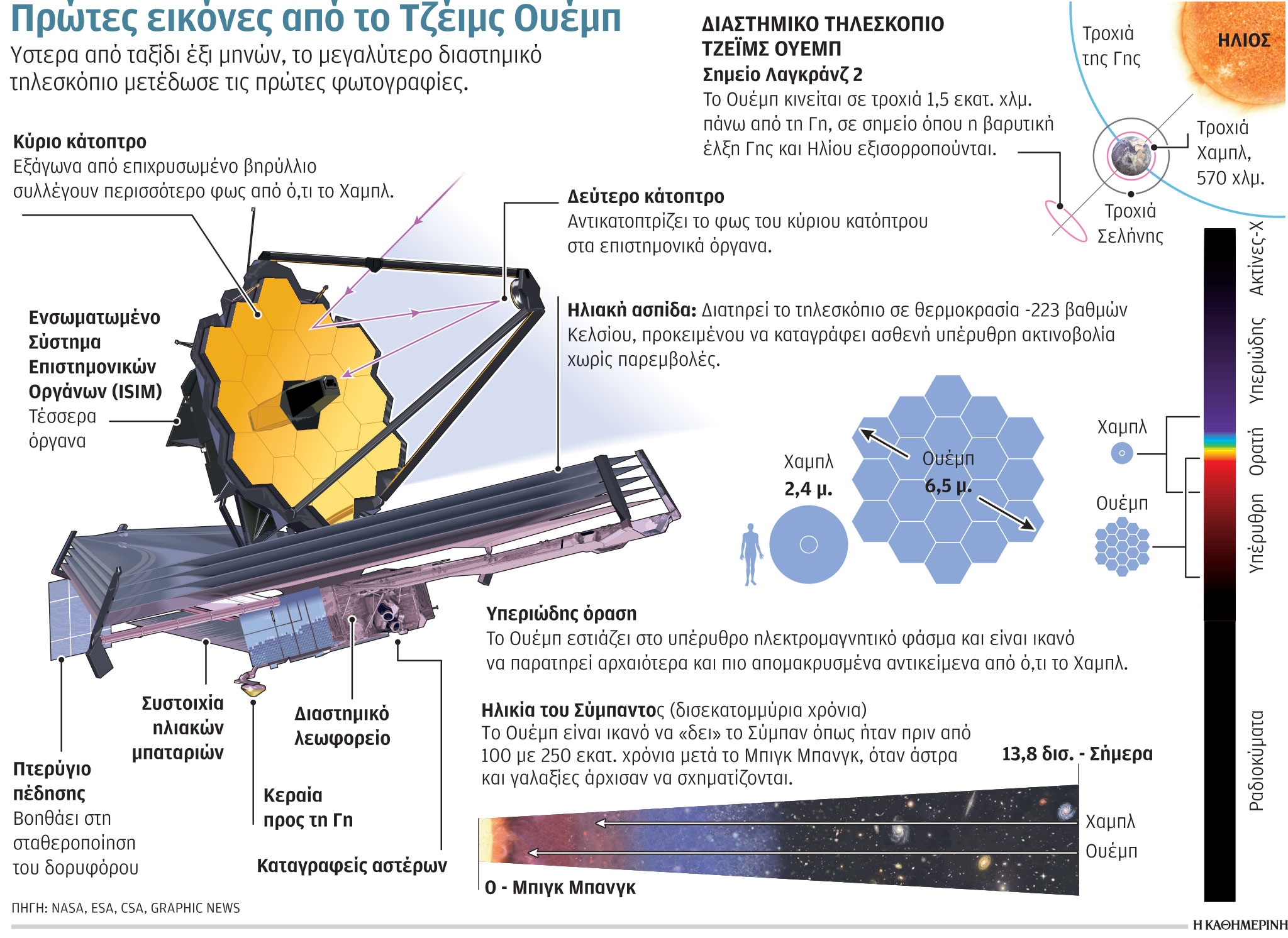
“And where to see the rest of the photos ahead!” he tells us that he is visibly agitated Dionysus Simopouloshighly experienced astrophysicist and honorary director of the Eugenides Planetarium, for the first image obtained by mankind from a space telescope. James Webbthe largest and most expensive in history.
As Mr. Simopoulos continues to explain to us: “We will get 5 or 6 more photos from the telescope (expected to be released this afternoon). We’re talking about images that… will blow our minds! What I saw is the most amazing thing I have seen in my 50 years of professional life.“.
This first image shows SMACS 0723, where a huge cluster of galaxy clusters acts as a magnifying glass for objects behind them, scientists say. This is called gravitational lensing, and it’s what gave Webb the first deep field of view of incredibly old and distant galaxies.
And the images we expect will show the formation of new galaxies about 13 billion years ago, just a few million years after the Big Bang.
“The truth is that from such a large telescope that reaches 6 meters, we expected something so impressive, but in fact what we received as a first response is unprecedented, it is something else!” continues Mr. Simopoulos, extolling the capabilities of the telescope that was launched last Christmas inside the Ariane 5 launch vehicle.
In his words: “This particular photograph, like others that come to us, is only the surface of the possibilities of this telescope and the material that it will give us.
“In the past, Hubble has also given us artwork from space, but this new information has huge implications, opening up a whole new window in the access we now have to space in terms of content and imagery.
Scientific information rises to many levels with this tool that takes us by the hand and leads us to the genesis of the universe. We are talking about almost 13.8 billion years ago. We have almost reached the limits of the universe.”

“The deepest picture” ever made and huge opportunities for future research
Explaining to viewers that this is a gorgeous and atmospheric photo we’re looking at, like a piece of abstract art (the image is sparkling and beautiful, as described by The Atlantic), NASA Director Bill Nelso said that the light from the foreground galaxies has gone up to 4.6 billion years, and the light from the galaxy behind them even longer. “All of this light was captured in unprecedented detail by the most powerful space telescope in history, making it “the deepest picture of our universe ever taken.”
It is noted that some of these distant galaxies and star clusters have never been recorded before. The cluster of galaxies looks like it appeared 4.6 billion years ago.
And what does all this mean for the future “decoding” of the Universe? As Mr. Simopoulos points out: “Many may think that these images are very beautiful, but have nothing to do with our own life here, but this is not at all the case. The possibilities now open to researchers are truly endless. henceforth, scientists will be able to explore the Universe throughout its evolutionary path..
“In addition to perceiving the cosmological phenomenon itself, scientists will be able to study the birth and evolution of stars in more depth, as well as try to provide answers to what happens when they die. They will give us more answers about why galaxies are the way they are, and how they evolve.
In the coming years, we will get a real stream of scientific papers that will answer a lot of cosmological questions. In turn, these answers will reach the very edges of our own existence. The answers will also become more detailed.”

In fact, the space-based observatory, which began operations in December last year, will be able to look into the atmosphere of exoplanets and observe some of the first galaxies to form after the universe began, observing them in infrared light invisible to the human eye.
As Mark McCaughan, head of science at ESA (European Space Agency), said: “These images were obtained from just five days of observations. Think about what we will see in the coming months and years.”
Mr. Simopoulos gives us an idea: “Until now, we knew 5% of the components of the universe, and the remaining 95% were unknown to us. Now we will begin to gradually “cross” these 95%”.
Source: Kathimerini
Robert is an experienced journalist who has been covering the automobile industry for over a decade. He has a deep understanding of the latest technologies and trends in the industry and is known for his thorough and in-depth reporting.